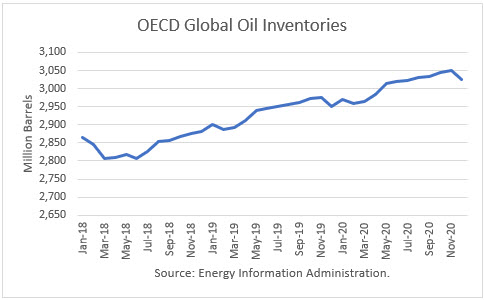The Energy Information Administration released its Short-Term Energy Outlook for January, and it shows that OECD oil inventories likely bottomed last June at 2.806 billion barrels. It estimated an 8 barrel gain for December to 2.883 billion, 39 million barrels higher than a year ago.
Throughout 2019, OECD inventories are generally expected to rise. At year-end, EIA projects ending the year with 2.951 million barrels, 68 million more than at the end of 2018.
EIA also extended its outlook through 2020 for the first time. It projects that stocks will build another 75 million barrels to end the year at 3.025 billion. That would push stocks into glut territory.

Oil Price Implications
I performed a simple linear regression between OECD oil inventories and WTI crude oil prices for the period 2008 through 2017. As expected, there are periods where the price deviates greatly from the regression model. But overall, the model provides a reasonably high r-square result of 79 percent. Continue reading "World Oil Supply, Demand And Price Outlook, January 2019"




